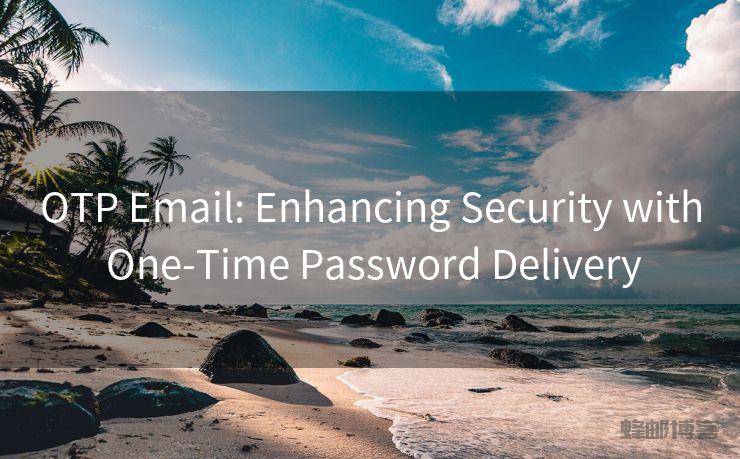OTP Email: Enhancing Security with One-Time Password Delivery




OTP Email: Enhancing Security with One-Time Password Delivery
Introduction to OTP Email
In the digital age, where cybersecurity threats are continually evolving, the need for robust security measures has never been greater. One of the most effective ways to enhance security is through the use of One-Time Passwords (OTPs). OTPs provide a layer of security that can protect sensitive information from unauthorized access. This article explores the concept of OTP Email, a method of delivering OTPs via email, and how it can significantly enhance security.
How OTP Email Works
OTP Email works by generating a unique, temporary password that is sent to the user's email address. This password can only be used once and is typically time-sensitive, expiring after a short period. The process involves several steps:
- User Request: When a user attempts to log in or perform a sensitive operation, they request an OTP.
- OTP Generation: The system generates a unique OTP.
- Email Delivery: The OTP is sent to the user's registered email address.
- User Input: The user retrieves the OTP from their email and enters it into the system.
- Verification: The system verifies the OTP and, if correct, grants access.
This method ensures that even if a user's regular password is compromised, the attacker would still need access to the user's email account to obtain the OTP.

Advantages of Using OTP Email
Enhanced Security
OTP Email provides a significant security boost. Since OTPs are single-use and time-limited, the risk of them being intercepted and reused by an attacker is minimized. Even if an OTP is intercepted, it is useless after it expires.
Ease of Implementation
Implementing OTP Email is relatively straightforward. Most modern systems and applications can easily integrate OTP functionality using existing email infrastructure. This reduces the complexity and cost associated with deploying additional hardware or software.
User Convenience
Users are already familiar with email and are more likely to accept OTP Email as a security measure. It does not require users to download additional apps or use unfamiliar devices. The familiarity and simplicity of email make OTP Email a user-friendly option.
Common Use Cases for OTP Email
Account Login
One of the most common uses of OTP Email is during account login. When users log in from an unrecognized device or location, the system can send an OTP to their email to verify their identity. This adds an extra layer of security to the login process.
Transaction Verification
For financial transactions, OTP Email can be used to verify the identity of the user before the transaction is completed. This is especially useful for online banking and e-commerce platforms, where security is paramount.
Password Recovery
OTP Email is often used in the password recovery process. When a user requests to reset their password, an OTP is sent to their email to confirm their identity. This ensures that only the legitimate user can reset the password.
Challenges and Considerations
Email Security
The security of OTP Email relies heavily on the security of the user's email account. If the email account is compromised, the OTP can be intercepted by an attacker. Therefore, it is crucial for users to secure their email accounts with strong passwords and, if possible, enable two-factor authentication.
Delivery Delays
Email delivery can sometimes be delayed due to network issues or email service provider constraints. This can frustrate users, especially if they are in a hurry. Ensuring reliable and fast email delivery is essential for a good user experience.
🔔🔔🔔
【AOTsend Email API】:AOTsend is a Managed Email Service for sending transactional emails. Support Email Types: reminders, authentication, confirmations, notifications, verification codes, invoices, password resets, account activations, billing statements, two-factor authentication (2FA), and one-time passwords (OTP) emails, etc. $0.28 per 1000 Emails. 99% Delivery, 98% Inbox Rate.
You might be interested in:
Why did we start the AOTsend project, Brand Story?
What is a Managed Email API, How it Works?
Best 25+ Email Marketing Platforms (Authority,Keywords&Traffic Comparison)
Best 24+ Email Marketing Service (Price, Pros&Cons Comparison)
Email APIs vs SMTP: How they Works, Any Difference?
Phishing Attacks
Phishing attacks can target users by tricking them into entering their OTP on a fake website. Educating users about the risks of phishing and how to recognize legitimate requests for OTPs is vital in mitigating this risk.
Best Practices for Implementing OTP Email
Secure OTP Generation
Ensure that OTPs are generated securely using a reliable algorithm. Avoid predictable patterns and use sufficient randomness to prevent OTPs from being guessed.
Timely Expiry
Set a short expiry time for OTPs to reduce the window of opportunity for attackers. Typically, OTPs should expire within a few minutes.
Monitoring and Alerts
Monitor OTP requests for unusual patterns that might indicate abuse or attack attempts. Implementing alerts for suspicious activities can help in quickly identifying and responding to potential threats.
User Education
Educate users about the importance of OTPs and how to use them securely. Provide clear instructions on recognizing legitimate OTP requests and the risks of phishing.
Conclusion: The Future of OTP Email
OTP Email is a powerful tool for enhancing security in various applications. By providing a simple yet effective method for verifying user identities, it helps protect sensitive information from unauthorized access. As cybersecurity threats continue to evolve, the use of OTP Email is likely to become more widespread. Implementing best practices and staying vigilant against potential risks will ensure that OTP Email remains a reliable and secure method for protecting digital identities.




Scan the QR code to access on your mobile device.
Copyright notice: This article is published by AotSend. Reproduction requires attribution.
Article Link:https://www.mailwot.com/p16.html



